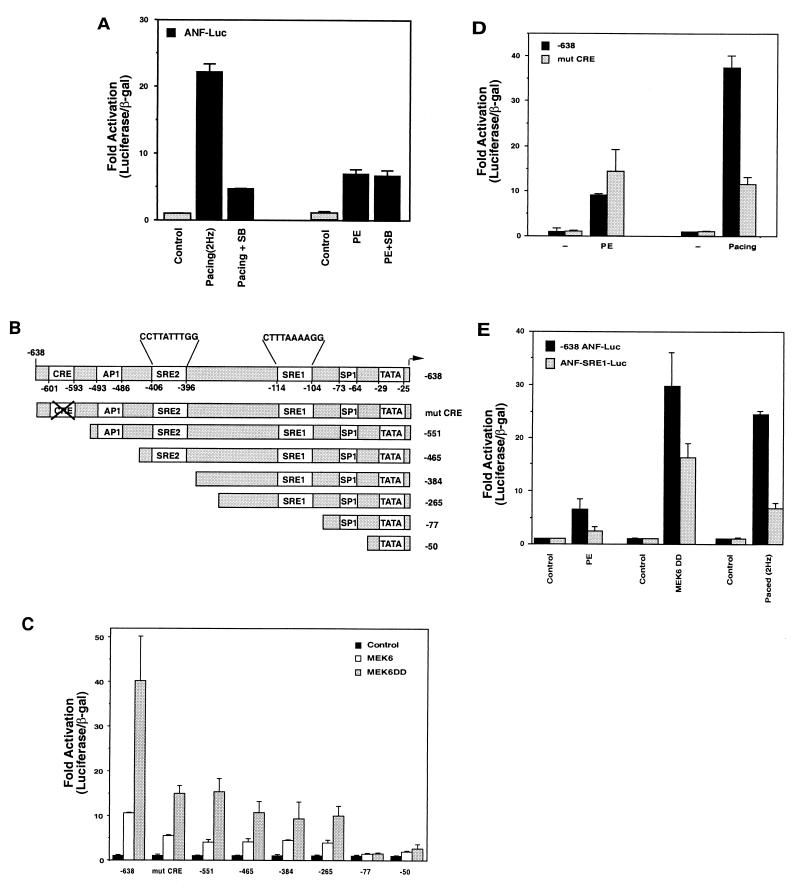FIG. 1.
Pacing- but not phenylephrine-induced ANF expression requires p38. (A) Cells were transfected with ANF-luciferase and then treated with phenylephrine (PE) or electrically paced to induce contraction at 2 Hz in the presence or absence of the p38 inhibitor SB 203580 (SB). Both electrical pacing and phenylephrine-induced ANF-luciferase expression, but inhibition of p38 only reduced pacing-induced expression. (B) Schematic of truncation mutants of the −638 ANF promoter, indicating putative transcriptional elements. (C) Cells were transfected with control vectors, expression vectors for wild-type or activated MEK6, and various truncations of the ANF promoter driving luciferase or a mutation in a CRE-like element. Note that MEK6 activity induces the ANF promoter and that this is partially inhibited by mutation or truncations that remove the CRE-like element. Complete inhibition of activation occurs when an SRE-like element is deleted (−77). (D) Cells were transfected with the wild-type −638 promoter, or one which contains the CRE mutation, and then stimulated by phenylephrine or pacing. Both stimuli induced the wild-type promoter and while the CRE mutation significantly inhibited pacing-induced expression, it had no effect on phenylephrine-stimulated expression. (E) Cells were transfected with the −638 promoter or a mutant promoter in the SRE1 sequence (ANF-SRE1-Luc) and treated with phenylephrine, cotransfected with active MEK6, or electrically paced. Activation of the SRE1 mutant promoter is compromised for all stimuli.

